Ultimate Reference Interconnects & Rhodium AC Powercords
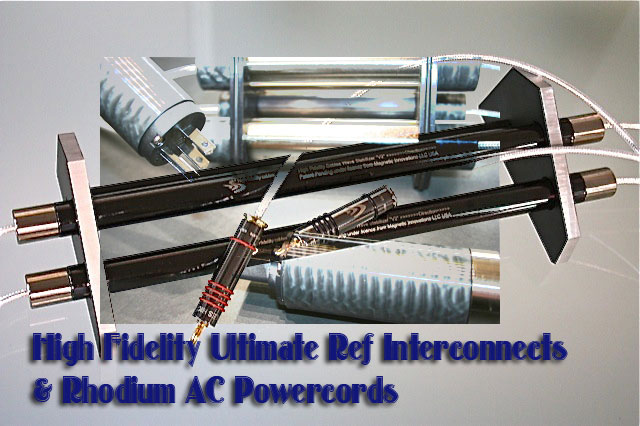
 High Fidelity Cables has been continuously further developing its “magnetic conduction” applications in audio. The Ultimate Reference interconnects and speaker cables are the fourth in the series of High Fidelity Cables I have heard. Clearly they are both the best and the most expensive. I have had a major improvement in my music reproduction and hoped to hold everything constant in this review, but events interfered.
High Fidelity Cables has been continuously further developing its “magnetic conduction” applications in audio. The Ultimate Reference interconnects and speaker cables are the fourth in the series of High Fidelity Cables I have heard. Clearly they are both the best and the most expensive. I have had a major improvement in my music reproduction and hoped to hold everything constant in this review, but events interfered.
I have noted a steady increase in the time it takes HF cables to reach their best. The Ultimate References are definitely the longest to break in as well as the most discombobulated by being moved for any reason. I thought that it took them several weeks to get to their best, but then about a month after being undisturbed, I had magic on virtually every album of a real sound stage before me. Then I moved some of the loom and long await the return of the magic. This having to await break-in would seem troublesome for dealers to sell and have customers be satisfied. But they are also awful for reviewers. Really for a true A/B comparison, I need to install the component to be evaluated, listen, and the reinstall the reference component and listen again. Being moved would disadvantage both cables. But, of course, neither will have the real benefit the Ultimate Reference bring forthe once broken in.
In this review, however, I just keep listening with no change in my system or moving cables. If I hear more than I ever heard before, it is the High Fidelity Ultimate Reference cables relative to their Ultimate predecessors.
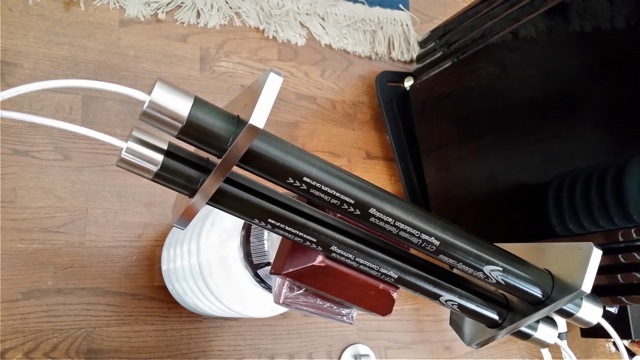
These are heavy cables as the waveguides are thicker and longer. I have had no problem with them in my system, however. I have the following cables–one 1 meter and one 1.5 meter set of interconnects and one set of eight ft. speaker wires. I have no phono cables and no digital wires. I may soon buy a phono cable, but still rely on the Ikeda silver cables provided with the arm. The interconnects have large o-rings at both ends of the waveguides that keep them from being in contact with each other. I used to use blow-ins cards between them. Now there is no need to do so although the o-rings do easily come off. The cables come in a large, well-padded, black flight case.
Setup
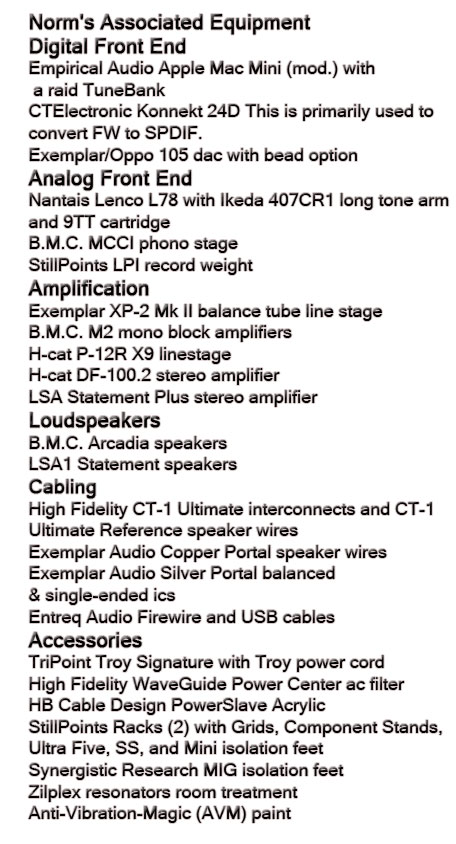 This time my setup was simple. I merely replace HF Ultimates in the loom with HF Ultimate References and awaited break-in. There was a time when I reinserted the HF Ultimates and thought they might be better, but after further break-in this thought vanished. Much later, I again went back to the HF Ultimates and gave them time to settle down. The Ultimate References clearly had quieter backgrounds and more detail, probably as a result.
This time my setup was simple. I merely replace HF Ultimates in the loom with HF Ultimate References and awaited break-in. There was a time when I reinserted the HF Ultimates and thought they might be better, but after further break-in this thought vanished. Much later, I again went back to the HF Ultimates and gave them time to settle down. The Ultimate References clearly had quieter backgrounds and more detail, probably as a result.
There was one change forced on me by the failure of one of my BMC M2 amps. One of these monoblocks lost volume. It is now out for repair and has been for the last two months. I have resorted to a highly modified LSA Statement stereo amplifier. Both looms of cables were extensively used with this amplifier.
Recently Rick Schultz showed up with three of his new top of the line, Ultimate Reference Rhodium AC cords. There are two other AC cords offered: the Ultimate AC cord and the Ultimate Reference AC cord. I will focus on the Rhodium units, as they were all that was available to me at the time. So I am now comparing the HFC Ultimate Reference plus the three HFC Ultimate Reference Rhodium AC cords versus the HFC Ultimate with my reference Exemplar Portal (charged) AC cords, many of which remained in the system as I only had three of the HFC AC cords.
These AC cords are strikingly different than we have ever seen as you can see in the picture, but the construction is largely the same as that for the High Fidelity interconnects and speaker wires, with the exception that there are three wires each with a seven-inch waveguide AC plugs at the ends. These plugs are also unique. They are nearly four inches long but with the expected wall plug blades and IEC female ends. The waveguides and plugs are full of strong rare earth magnets, as is typical of and key to High Fidelity products.
The design philosophy is that the magnets and wave guide’s use of them, keeps EMI, RFI and other noises on the AC from getting to the AC transformers and thus into the sound. All of AC cords are 1.5 meters long. The wave guides weigh a good deal, and as such, you will need to provide support. I have also sought to isolate them electrically from the floor.
Initially we installed one from the wall to the High Fidelity Magnetic Waveguide AC Power Center. Later another was added to power the BMC PureDac and later switched to the Exemplar eXpo T-105 universal player, and finally, a third was put on the LSA Statement amplifier. I initially sought to try the two lesser AC cords, but as yet, parts are in short supply. The full loom of cables remains the HFC Ultimate References.
All of the components to my system are broken in. This includes the High Fidelity Ultimate Reference interconnects and speaker cables, the High Fidelity Magnetic Waveguide Power Center and all the electronics. My speakers, their crossovers, and my amplifier are on Star Sound Tech Apprentice platforms.
Listening Sessions
After about an hour of listening to the system to familiarize Rich Schultz, we installed the first HFC Ultimate Reference Rhodium Plus AC cord to his Magnetic Waveguide Power Center. Initially the sound was quite closed down but gradually instruments came out of the gloom. We stopped for lunch. We returned about an hour later and were in for a shock.
The first few notes of a cut of Rickie Lee Jones’ Pop Pop Geffen (Gef 24426) caused us both to look at each other in disbelief. The sound was sharply different from what we had ever heard without the HFC AC cord to their HFC Magnetic Waveguide AC power Center. I have often heard what I thought was a precise sound stage before me but this was far greater. It was very immediate with a sharp leading edge and the bass was so well defined and powerful as to suggest we had not heard bass reproduced like this was doing. We sat down to hear selections off my music server and continually said, wow! I was astounded by so many of my reference cuts having so much more information in them than I had ever heard. This lowering of the noise floor and sharp increase in detail seems characteristic of all High Fidelity pieces and each further augments the realism of the sound.
Late in the afternoon we installed a second HF AC cords on the BMC PureDac. This was an improvement but not near that of the first one. The real jump came the next day when Rick was gone. I managed to get a 1.5 m High Fidelity Ultimate Reference Rhodium Plus AC cord to my amp. The volume level of the LSA Statement rose substantially with this cord. I have since note the same pattern with one of the AC cords on the Koda K10 linestage and on the Exemplar eXpo T 105 universal player.
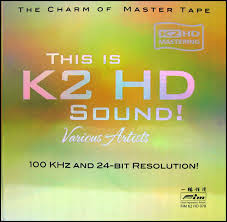 I then listened to a good deal of music and heard many improvements with all three HFC AC cords in. One example is the Rob Wasserman’s Duets (MCA Audiophile MCAD-42131) disc. Every cut has an excellent holographic sound stage that varies greatly in size and shape. In particular, the Stephane Grappelli’s violin performance in “Over the Rainbow’ and Cheryl Bentyne’s “Angel Eyes,” are exemplary. Another example is the Amerset Swan Lake Duo selection on the K2 sampler (This Is K2 HD Sound UD! FIM K2 HD 078). I have always loved this recording as the instruments are well captured. But with the new AC cords, the depth of the orchestra is now captured and the leading edge on violins, horns, and bass being plucked are quite convincing.
I then listened to a good deal of music and heard many improvements with all three HFC AC cords in. One example is the Rob Wasserman’s Duets (MCA Audiophile MCAD-42131) disc. Every cut has an excellent holographic sound stage that varies greatly in size and shape. In particular, the Stephane Grappelli’s violin performance in “Over the Rainbow’ and Cheryl Bentyne’s “Angel Eyes,” are exemplary. Another example is the Amerset Swan Lake Duo selection on the K2 sampler (This Is K2 HD Sound UD! FIM K2 HD 078). I have always loved this recording as the instruments are well captured. But with the new AC cords, the depth of the orchestra is now captured and the leading edge on violins, horns, and bass being plucked are quite convincing.
Everything with these AC cords gives an illuminated soundstage with sharply defined leading edges. The bass is very profound and well defined. There is an ease to the sound as though my amplifier had twice the power. Again persisting in the illumination analogy, sonically it is like having very bright lights on the performers. High Fidelity argues that these AC cords keep the noises out of the components that mingle with the music and confuse the sound. That certainly fits what I heard.
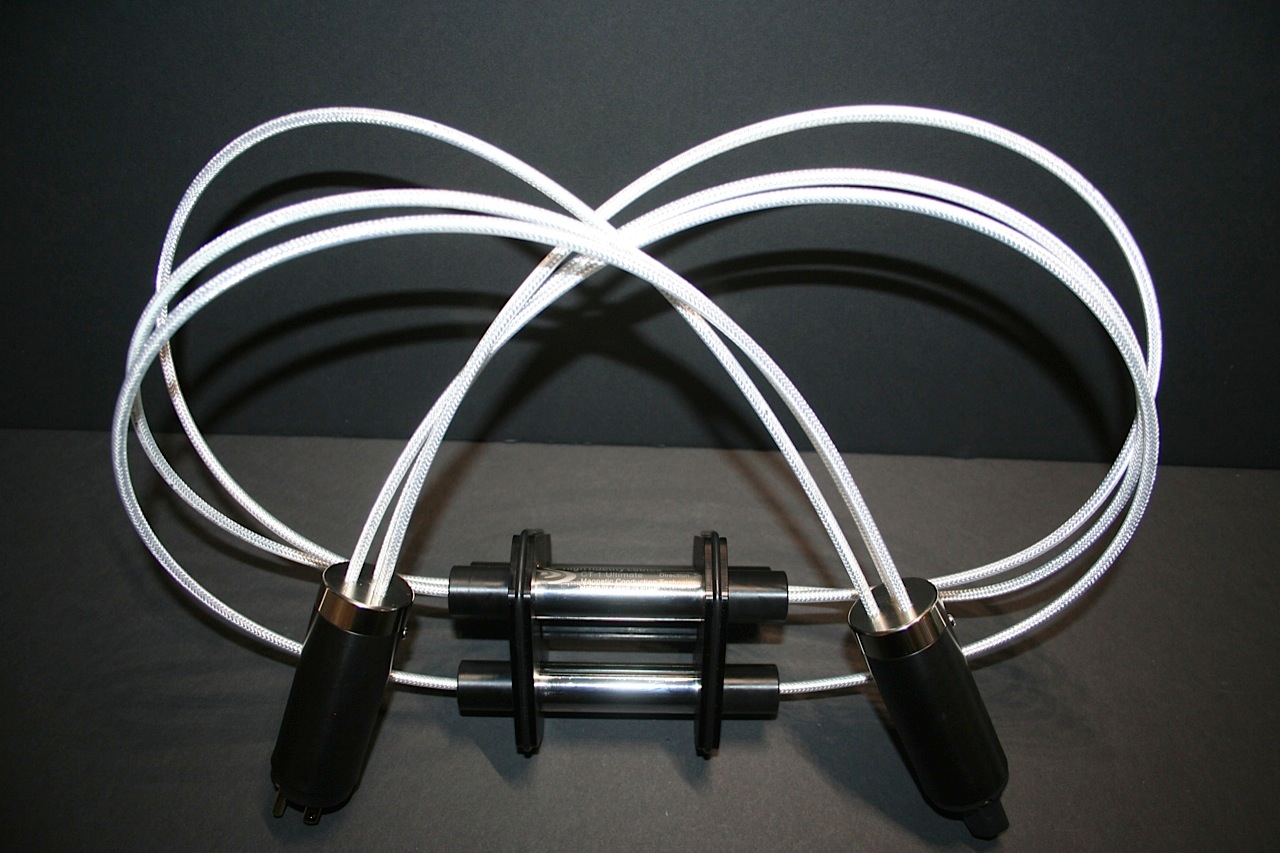
The Day of Magic
A day after the above was written and the third day that all three HF AC cords had been in, I moved the Exemplar eXpo T 105 modified Oppo 105 into the system replacing the BMC PureDac. After doing so, I had lunch. After lunch I chose some music and to my great surprise I heard the most holographic sound stage I have ever heard in any sound system. It was on Rob Wasserman’s Duets again, Aaron Neville singing Stardust. All of the cuts on this, as noted
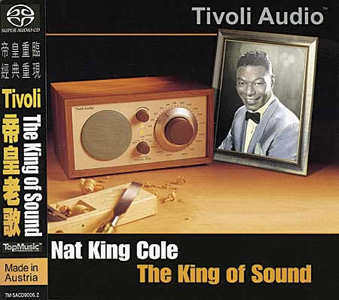
above, are very open and involving, but this time was different. I could hear the decay of the instruments and the vocals and there was a vivid sound stage before me. Every cut I tried on this record was similarly quite real and involving.
Also memorable was Nat King Cole’s ‘Unforgettable’ on Nat King Cole The King of Sound (Top Music International SACD TMISA9006). The sound was quite wide and tall and sounding, where it had not before. Many other recordings seemed both wide open and involving but also more holographic than before. The High Fidelity AC cord was chiefly, if not solely, responsible for this transformation as nothing else was changed. I don’t really know how this was achieved save that with them in my system the sound was quieter, more dynamic, and had more detailed thanks to less noise.
Conclusion
I have never heard an AC cord that sounds so different from the rest as the HFC Ultimate Reference Rhodium. Of course, every AC cord gets power to the component, but some go further and this one, much further. It sounds very fast, has details that have never been heard before, has great clarity, well defined and extended bass and a fast and clean top end. You will recognize the recordings you play, but they will sound quite different. Much of what I am hearing has always been there but lost in the noise. Many recording are truly exceptional, but you will only realizes this with the noise coming into your system is removed. I have never heard this effect from any other AC cord. Frankly, I think Rick Schultz’s AC cords are the most important contribution of his ‘magnetic conduction’ technology.
And then there is their cost. There is little question that all of these products are much more than three-piece designs with a cable in between electrical plugs, RCAs, or spade or bananas at each end. There are many rare earth magnets inside each plug and great care has to be maintained to assure that all the magnetic poles are the same at each end. But nevertheless, putting these AC cords throughout my system would cost me as much as $50,000!
My temporary backup LSA Statement, $4500 amplifier with an $13,575 AC cord (as used) sounds better than every expensive amplifier I’ve heard, so maybe this make sense. Similarly my $4750 Exemplar eXpo T 105 universal player with the $13,575 AC cord is better than any player I have ever heard. I know of no other way to achieve the sound I have with these AC cords, but there are less expensive HFC AC cords. So after I wrote all of the above, I asked for two HFC Ultimate AC cords to find out how well they fared.
Last Saturday I had four audiophiles in to hear a comparison between an inexpensive AC power cord, the HFC Ultimate, and of course, the HFC Ultimate Reference Rhodium AC cords. At that time, the Ultimates were not really ready for prime time, as they had only be on overnight, but some findings held even over a week later with the Ultimates now well broken in.
At the time of their visit, the HFC Ultimate Reference Rhodiums had been in for weeks. I already knew that my Exemplar Portal charged AC cords were easily bettered by the HFC Ultimate Reference Rhodiums, but one of the visitors brought a Furutech all copper AC cord for comparison with the HFC AC cords. On putting it in, running from the wall outlet to the AC filter, we immediately heard less dynamics and a higher noise floor. Everything loss the effortless we had heard with the HFC Ultimate Reference Rhodiums. Frankly, I stopped the listening to it and put the HFC Ultimate in.
With it, the soundstage was broader and more precise, and it had an ease to it. Furthermore its noise floor was lower. We had listened to a Turtle Record hybrid SACD by Tony Overwater called Up Close on a vividly record piano cut, “Chapelle De Guillaume Tell,” earlier, and I recalled greater realism on the Ultimate Reference Rodium AC cord, but the Ultimate was close. I must admit that then and later I often sought a quick comparison with the HFC Ultimate Reference Rhodium. It turned out in such comparisons that the URRs had more detail with a lower noise floor. Overall, had I first tried the Ultimates and not the Ultimate Reference Rhodiums, I could have been quite satisfied, but I tried the most expensive first.
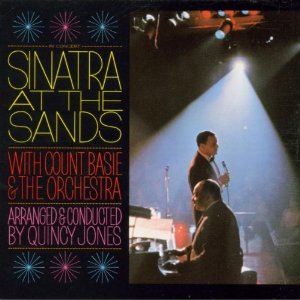 There is no question that you hear more with the Ultimate Reference Rhodiums, as the noise level is even lower and you can hear the decay of each note in many recordings, my system acquits it self quite well, as even loud passages are effortless, not strident. I was quite struck by the live performance of Frank Sinatra and Count Basie and his band at the Sands (Sinatra At The Sands Vicy (94366 Japan) SHM). I’ve always heard the audience when they laugh or applauded, but with the Ultimate Reference Rhodiums, even when they are quiet, you sense their presence and you are aware of the band being there also. None of this is music, of course, but you hear the pluck of the double bass in symphonies, Paul Simon’s guitar, the raspiness of the violin, etc. also. I have always wished I had been at the Sands to hear this Sinatra and Basie show and to heard Thelonious Monk in concert. Now I really have a greater sense of having been there. I am sorry to rave about such an expensive AC powercord, but it is really exceptional. But remember that the HFC Ultimate is about half the Ultimate Reference Rhodium’s price and also exceptional.
There is no question that you hear more with the Ultimate Reference Rhodiums, as the noise level is even lower and you can hear the decay of each note in many recordings, my system acquits it self quite well, as even loud passages are effortless, not strident. I was quite struck by the live performance of Frank Sinatra and Count Basie and his band at the Sands (Sinatra At The Sands Vicy (94366 Japan) SHM). I’ve always heard the audience when they laugh or applauded, but with the Ultimate Reference Rhodiums, even when they are quiet, you sense their presence and you are aware of the band being there also. None of this is music, of course, but you hear the pluck of the double bass in symphonies, Paul Simon’s guitar, the raspiness of the violin, etc. also. I have always wished I had been at the Sands to hear this Sinatra and Basie show and to heard Thelonious Monk in concert. Now I really have a greater sense of having been there. I am sorry to rave about such an expensive AC powercord, but it is really exceptional. But remember that the HFC Ultimate is about half the Ultimate Reference Rhodium’s price and also exceptional.
Well now I need to figure out how to afford these four cables and to hope I don’t need more.


norm luttbeg
Specifications:
Ultimate Reference interconnects: $8,900/1m. pair
Additional .5m $450
Ultimate Reference speaker wires: $12,900/1m. pair
Additional .5m $900
Ultimate Power Cord: $6900/ 1 m.
Ultimate Reference Power Cord: $10,900/1 m.
Ultimate Reference Rhodium Plus Power Cord, $12900/1 m.
Additional .5 meter $675
High Fidelity Cable
Telephone number: 1-972-312-1902
Website: www.highfidelitycables.com
Stereo Times Masthead
Publisher/Founder
Clement Perry
Editor
Dave Thomas
Senior Editors
Frank Alles, Mike Girardi, Russell Lichter, Terry London, Moreno Mitchell, Paul Szabady, Bill Wells, Mike Wright, and Stephen Yan,
Current Contributors
David Abramson, Tim Barrall, Dave Allison, Ron Cook, Lewis Dardick, John Hoffman, Dan Secula, Don Shaulis, Greg Simmons, Eric Teh, Greg Voth, Richard Willie, Ed Van Winkle, Rob Dockery, Richard Doran, and Daveed Turek
Site Management Clement Perry
Ad Designer: Martin Perry





Be the first to comment on: Ultimate Reference Interconnects & Rhodium AC Powercords